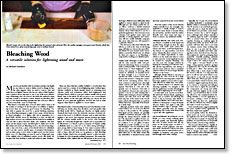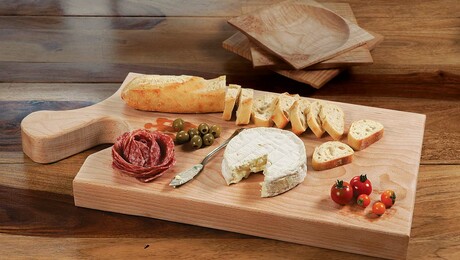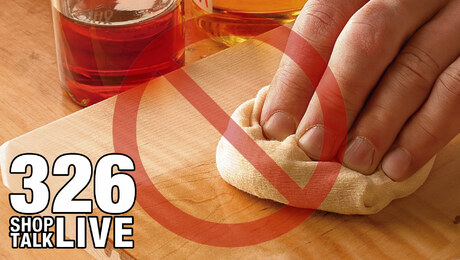
Synopsis: Michael Dresdner talks about various ways to bleach wood, and why you’d want to in the first place. He explains the chemical reactions behind how bleach works and how to use it effectively. He lists safety equipment and precautions to take when working with bleach, and he includes a side article on how to choose from available bleaches, including oxalic acid, chlorine bleach, and A/B wood bleach.
Most of us are familiar with wood stains and dyes, the liquids we use when we want to darken wood or change its hue. But what happens when we need to remove color and make the wood lighter? Anyone who has set a piece of dark furniture near a window knows exposure to sun is one of the more effective ways of bleaching color out of wood. But while this method is cheap and easy, it tends to be hard to control. Instead, woodworkers often rely on a few liquid bleaching materials that take a bit more effort to use, but work nicely—even on cloudy days.
Why bleach a beautiful piece of wood when nature went to all the trouble of coloring it in the first place? In addition to lightening wood, there are numerous good reasons for bleaching. You may wish to prepare the wood for a special finishing treatment, such as bleaching mahogany to make it more cream colored (known as blond mahogany), or to lighten dark oak in preparation for a limed finish. Another reason for bleaching is to even out dark and light sections of wood, say a tabletop that has faded from sunlight on only one side or pieces that have drastic color variations. This technique can also impart a warm, sun-faded glow to darker new woods, like walnut and rosewood. Bleaching can do a nice job of removing a stain or dye color from a piece of woodwork before it is refinished, and it can also remove specific types of unwanted discolorations, such as water stains or iron stains on light woods. Bleaching can even be used to bring back some of the original color of unfinished exterior woods, like faded, silver-gray teak boat decking or cedar and redwood patio furniture.
There are three bleaches readily available to woodworkers that can be used for a variety of wood-lightening tasks: Sodium hypochlorite, available as liquid laundry bleach or swimming pool chlorine; oxalic acid (sometimes called “deck brightener”); and A/B-type bleach, which is a two-part solution usually sold as wood bleach. Later in the article I’ll tell you how to use a wood bleach, and the sidebar on the next page will help you choose the best bleach for your particular application. But first let’s look at what happens when bleach is applied to a wood surface.
From Fine Woodworking #86
For the full article, download the PDF below:
Fine Woodworking Recommended Products

Odie's Oil

Osmo Polyx-Oil

Diablo ‘SandNet’ Sanding Discs




















Log in or create an account to post a comment.
Sign up Log in